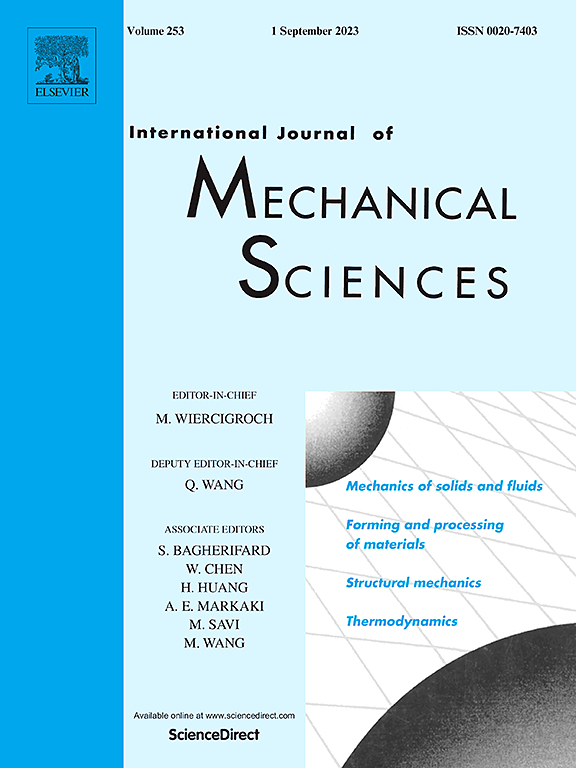Dynamics analysis and multi-objective optimization for a dry friction damper
IF 7.1
1区 工程技术
Q1 ENGINEERING, MECHANICAL
International Journal of Mechanical Sciences
Pub Date : 2025-02-01
DOI:10.1016/j.ijmecsci.2025.109930
引用次数: 0
Abstract
This paper presents the optimal design of a dry friction damper for a helicopter tail-rotor driveline, focusing on achieving superior vibration suppression around the first critical speed and enhanced component reliability. The optimization is driven by efficient fitness value calculations and response-based assessments of component wear. A detailed model is developed for the damper featuring a double-layer stator with dual rub-impacts, capturing complex interactions through derived semi-analytical solutions that enable precise and efficient dynamic response analysis. To assess durability, a novel wear metric is proposed, based on solution stability and differentiation of rub-impact patterns. Simulations are conducted to analyze multi-stage damping effects, dual rub-impact response characteristics, and parameter influences on these responses. Using a multi-objective optimization framework that incorporates both the semi-analytical solutions and wear metric, Pareto optimal solutions are generated through two metaheuristic algorithms, identifying distinct parameter regions to guide the development of two optimized damper configurations. These parameter recommendations are implemented through targeted adjustments and structural optimization, resulting in dampers that demonstrate significant improvements in both damping performance and wear reduction.

求助全文
约1分钟内获得全文
求助全文
来源期刊

International Journal of Mechanical Sciences
工程技术-工程:机械
CiteScore
12.80
自引率
17.80%
发文量
769
审稿时长
19 days
期刊介绍:
The International Journal of Mechanical Sciences (IJMS) serves as a global platform for the publication and dissemination of original research that contributes to a deeper scientific understanding of the fundamental disciplines within mechanical, civil, and material engineering.
The primary focus of IJMS is to showcase innovative and ground-breaking work that utilizes analytical and computational modeling techniques, such as Finite Element Method (FEM), Boundary Element Method (BEM), and mesh-free methods, among others. These modeling methods are applied to diverse fields including rigid-body mechanics (e.g., dynamics, vibration, stability), structural mechanics, metal forming, advanced materials (e.g., metals, composites, cellular, smart) behavior and applications, impact mechanics, strain localization, and other nonlinear effects (e.g., large deflections, plasticity, fracture).
Additionally, IJMS covers the realms of fluid mechanics (both external and internal flows), tribology, thermodynamics, and materials processing. These subjects collectively form the core of the journal's content.
In summary, IJMS provides a prestigious platform for researchers to present their original contributions, shedding light on analytical and computational modeling methods in various areas of mechanical engineering, as well as exploring the behavior and application of advanced materials, fluid mechanics, thermodynamics, and materials processing.
 求助内容:
求助内容: 应助结果提醒方式:
应助结果提醒方式:


